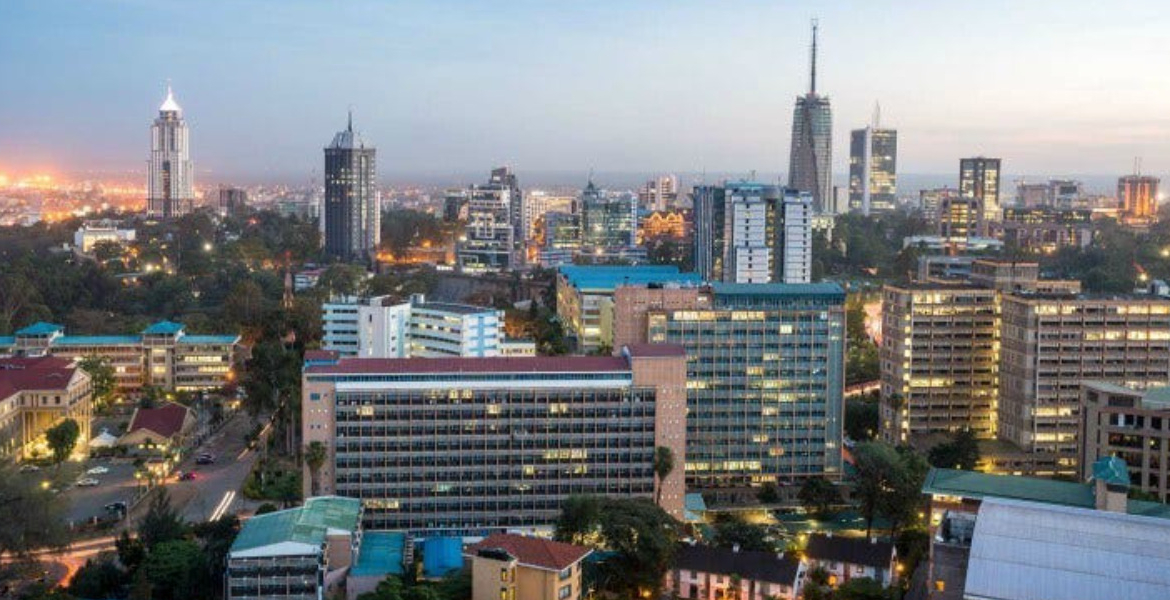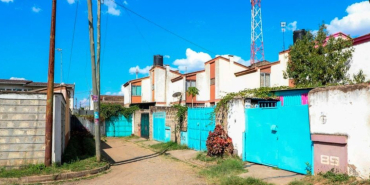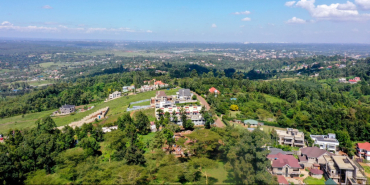Colourful Exteriors Redefine Urban Architecture Across Nairobi and Other Towns

A chromatic wave is sweeping across Kenya's urban centres, transforming the once-monochromatic skylines of its cities into vibrant tapestries of colour.
This aesthetic shift, particularly evident in Nairobi and other expanding metropolises, signals a profound evolution in the country's architectural identity, driven by technological advancements, evolving consumer preferences, and strategic governmental policies. For decades, Kenyan architecture was characterised by muted tones, largely due to economic constraints and limited access to advanced construction materials. Buildings were typically painted in utilitarian shades of grey, modest whites, or unfinished concrete.
Decorative elements were minimal, with homeowners often restricted to painting roof sheets in maroon or green, a pragmatic choice aimed at rust prevention rather than aesthetic enhancement. However, the landscape is now punctuated by bold façades featuring shades of red, yellow, orange, and pastel pink, a stark departure from the longstanding preference for neutrality. Experts attribute this transformation to several factors, including the influence of international design trends, regulatory directives from local governments, and innovations in paint technology.
Global Inspiration and Regulatory Influence
The impact of global design aesthetics is increasingly apparent, with local authorities drawing inspiration from international precedents to shape urban environments. According to George Ngege, President of the Architectural Association of Kenya (AAK), regulatory decisions informed by European practices have been instrumental in guiding the visual direction of Kenyan cities. In 2018, Mombasa County mandated that property owners paint their buildings in blue and white to mirror the serene oceanic backdrop, a move reminiscent of the famed Greek island of Santorini.
Similarly, in 2022, Kisumu implemented a directive requiring buildings to adopt the same hues. Ngege emphasises that these policies extend beyond mere aesthetic exercises, serving as tools for social and emotional transformation.
"Those kinds of regulations are there in other countries. In fact, there are places in Europe where streets have assigned colours. You can't just leave open stones," he notes, drawing a connection between vibrant urban spaces and social wellbeing.
He posits that cheerful streetscapes correlate with reduced crime rates and increased happiness, while dull, grey environments risk being perceived as sites of neglect or deviance.
Technological Innovation in the Paint Industry
Crucially, technological advancements in the paint industry have facilitated this chromatic shift, making vibrant exteriors more accessible and affordable. Earlier generations of homeowners faced significant financial and logistical barriers to painting, as exterior finishes were prohibitively expensive and colour options were limited. Local paint companies operated with basic product lines and minimal shade diversity, typically offering fewer than 200 colours on rudimentary fan charts.
Kamlesh Shah, Managing Director of Basco Paints, recalls the constraints of the industry three decades ago, when options like vinyl silk and super gloss dominated the market. Today, those limitations have been swept aside by major advances in manufacturing processes and data-driven design. Basco's latest offering, Aqua Tech Rainshield, is not only waterproof but also customisable in over 1,800 distinct shades.
This expansive colour palette has been facilitated by artificial intelligence (AI), which analyses consumer behaviour and global trends to predict future preferences with remarkable accuracy.
"With AI consumer insight that we have applied to this product, we came up with a futuristic kind of a prediction model where we asked: what kind of colours will be most suitable or most selected on a need basis by the consumers," Shah explains.
By feeding this data into colour-mixing systems available in over 800 retail outlets nationwide, customers can now select from a vast range of tones, including subdued pastels such as Tibet yellow and tango pink, which have gained traction among those seeking vivid but tasteful exteriors.
AI-Driven Product Performance
AI's role extends beyond streamlining colour selection; it also helps align product performance with user needs. Aqua Tech Rainshield, for example, integrates waterproofing directly into its formula, eliminating the cumbersome and expensive procedures traditionally required to seal buildings against moisture, such as chiselling away stone or installing polymer membranes. The result is a high-functioning paint solution that is both decorative and practical, responding to environmental demands without compromising on aesthetic value.
This expansion of choice has important implications for Kenya's architectural identity. As cities grow and housing projects proliferate, colour becomes a form of storytelling, marking the character of a neighbourhood, signalling development ambitions, and even shaping how residents perceive their surroundings. According to Silvester Muli, Chairperson of the Board of Registration of Architects and Quantity Surveyors, colour is often the first recognisable trait of a structure. Its power lies not just in decoration, but in the way it communicates vibrancy and order.








Add new comment